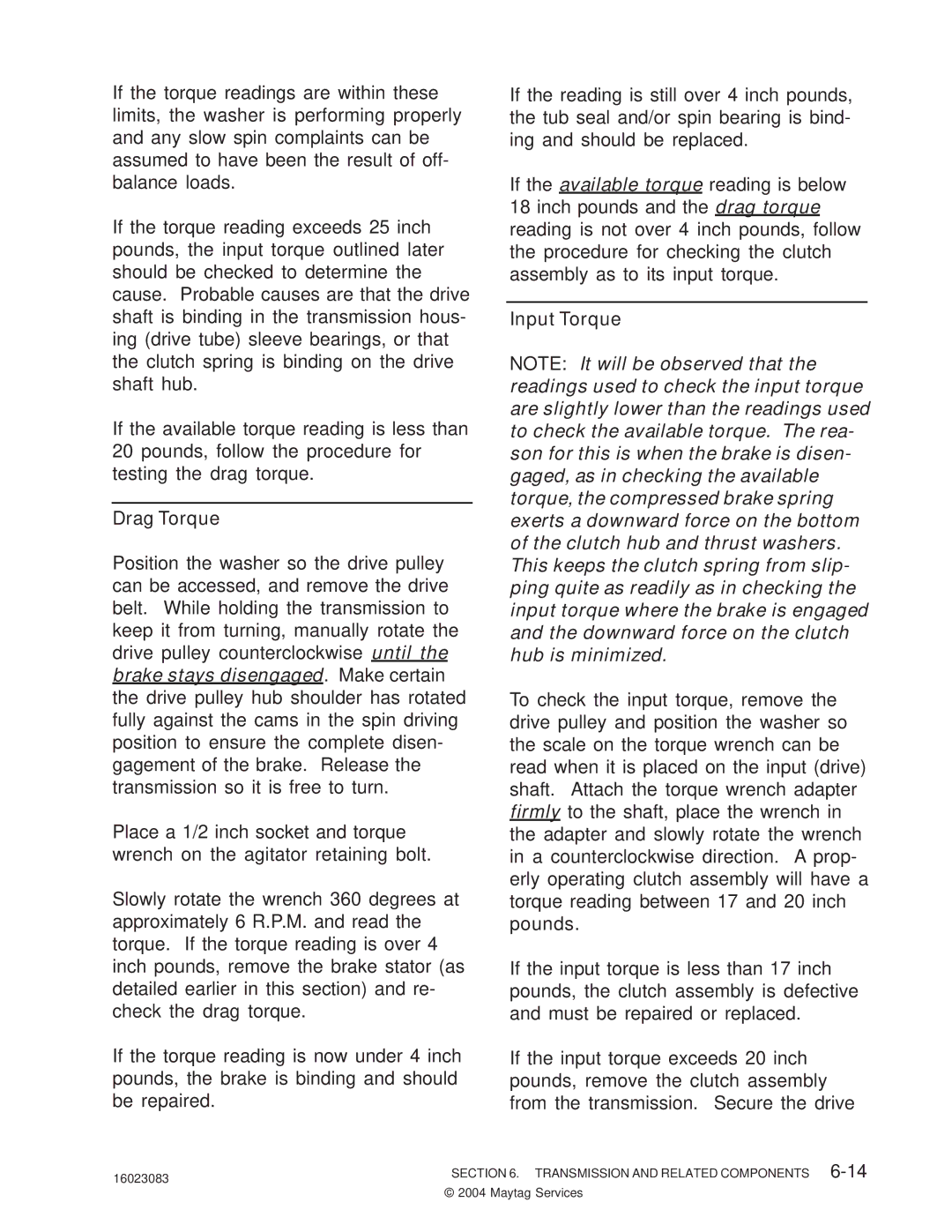
If the torque readings are within these limits, the washer is performing properly and any slow spin complaints can be assumed to have been the result of off- balance loads.
If the torque reading exceeds 25 inch pounds, the input torque outlined later should be checked to determine the cause. Probable causes are that the drive shaft is binding in the transmission hous- ing (drive tube) sleeve bearings, or that the clutch spring is binding on the drive shaft hub.
If the available torque reading is less than 20 pounds, follow the procedure for testing the drag torque.
Drag Torque
Position the washer so the drive pulley can be accessed, and remove the drive belt. While holding the transmission to keep it from turning, manually rotate the drive pulley counterclockwise until the brake stays disengaged. Make certain the drive pulley hub shoulder has rotated fully against the cams in the spin driving position to ensure the complete disen- gagement of the brake. Release the transmission so it is free to turn.
Place a 1/2 inch socket and torque wrench on the agitator retaining bolt.
Slowly rotate the wrench 360 degrees at approximately 6 R.P.M. and read the torque. If the torque reading is over 4 inch pounds, remove the brake stator (as detailed earlier in this section) and re- check the drag torque.
If the torque reading is now under 4 inch pounds, the brake is binding and should be repaired.
If the reading is still over 4 inch pounds, the tub seal and/or spin bearing is bind- ing and should be replaced.
If the available torque reading is below 18 inch pounds and the drag torque reading is not over 4 inch pounds, follow the procedure for checking the clutch assembly as to its input torque.
Input Torque
NOTE: It will be observed that the readings used to check the input torque are slightly lower than the readings used to check the available torque. The rea- son for this is when the brake is disen- gaged, as in checking the available torque, the compressed brake spring exerts a downward force on the bottom of the clutch hub and thrust washers. This keeps the clutch spring from slip- ping quite as readily as in checking the input torque where the brake is engaged and the downward force on the clutch hub is minimized.
To check the input torque, remove the drive pulley and position the washer so the scale on the torque wrench can be read when it is placed on the input (drive) shaft. Attach the torque wrench adapter firmly to the shaft, place the wrench in the adapter and slowly rotate the wrench in a counterclockwise direction. A prop- erly operating clutch assembly will have a torque reading between 17 and 20 inch pounds.
If the input torque is less than 17 inch pounds, the clutch assembly is defective and must be repaired or replaced.
If the input torque exceeds 20 inch pounds, remove the clutch assembly from the transmission. Secure the drive
16023083 | SECTION 6. TRANSMISSION AND RELATED COMPONENTS |
| © 2004 Maytag Services |
